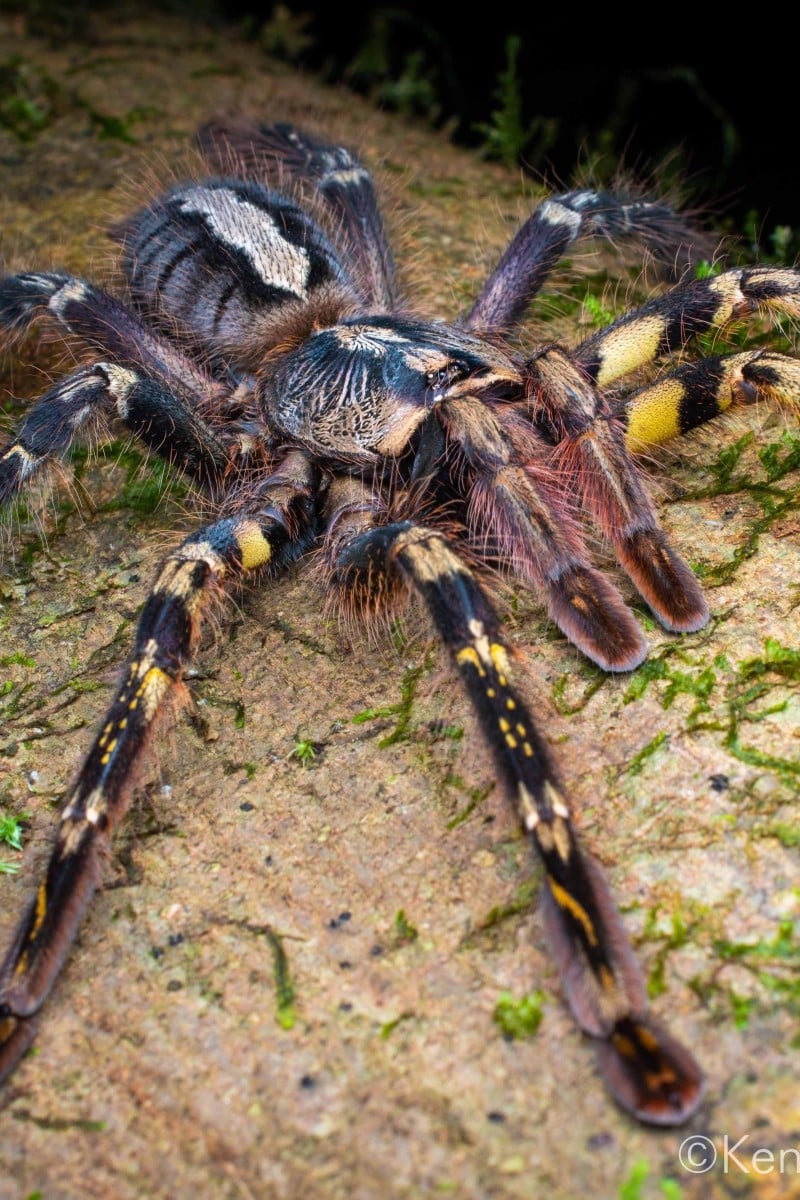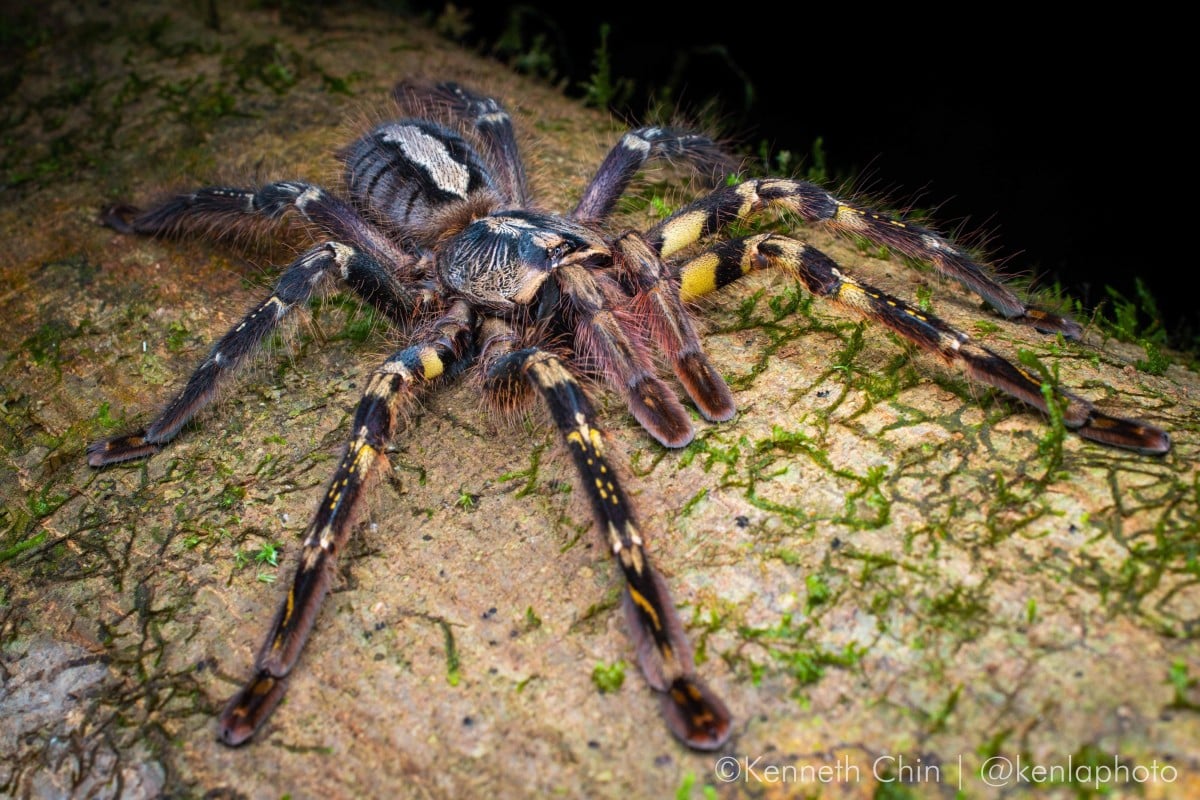
Study Buddy (Explorer): Growing demand for pet spiders and scorpions putting rare species at risk, warn scientists
- Each week, Study Buddy Explorer presents an interesting story that we have adjusted to be more accessible for all English learners
- Check your reading comprehension using the questions below or in the linked Kahoot! game
 The ornate tiger spider, which is endemic to Sri Lanka, is a popular traded species. Photo: Kenneth Chin
The ornate tiger spider, which is endemic to Sri Lanka, is a popular traded species. Photo: Kenneth ChinContent provided by the British Council
Read the following text and answer questions 1-9 below:
[1] Driven by the demand for exotic pets, a growing global trade is putting rare spiders and scorpions at risk, warned a team of international researchers. “Efforts are needed to monitor what is in trade ... to prevent potentially unsustainable trade and species extinction,” the team wrote in an article published in the journal Communications Biology last month.
[2] The team said that at least 70 per cent of spiders and scorpions being sold as pets, for medicine or food were sourced from the wild. The researchers detected more than 1,200 species available for sale in a generally legal trade. They are growing in popularity as “cool” pets that take up little space, but the scientists warned that meeting this growing demand by harvesting them could become unsustainable and risked a loss of biodiversity.
[3] The US market is a major centre for the trade of scorpions and spiders. Researchers found China exported the most of these animals – about 1.2 million – to the US, 38 per cent of which were sourced from the wild. The team searched arachnid online retailers, where prices can range from a few tens to thousands of US dollars depending on their rarity.
[4] Almost 80 per cent of the 1,264 species traded on online retailers were not detected on international trade databases. For example, a rare blue-legged tarantula in Malaysia, Birupes simoroxigorum, was listed for sale on an online forum, according to Alice Hughes, an associate professor at the University of Hong Kong’s school of biological sciences. This highlighted that rare or endangered species were being traded with no study of the effects, Hughes said. She added these fragile animals had a low chance of surviving transport without proper care and those left in the wild were threatened.
[5] The team said regional exports in Asia could mean the numbers of arachnids traded greatly exceeded what they detected. For example, fried spiders sold at night markets across parts of southern China are probably trafficked from Laos, Vietnam and Cambodia. Large tarantulas are more common in these countries compared with China, where they are popular for eating because of their size.
[6] Hughes said countries should better control the wildlife trade by introducing comprehensive regulations and public education. She pointed to the example of wild bird import bans in Europe and the US. Trade of wild birds has dropped about 90 per cent globally since the EU banned bird imports in 2005. Hughes said the ban removed the pressure on wild populations and the risk of disease and invasive species.
[7] In China, the arachnid trade has started to take off as they become more popular as pets. According to Hughes, the country should introduce regulations to make sure the animals are being exported sustainably or have better facilities for captive breeding. She said: “It’s in everyone’s interest for China to better regulate trade, to transit to a system reliant on captive breeding and better police land, sea and airports to prevent unregulated trades.”
Source: South China Morning Post, May 19
Questions
Play a Kahoot! game about this story as a class or with your friends by clicking on the link here.
Or play on your own below to test your understanding:
1. Find a word in paragraph 1 that refers to “something unusual and interesting because it comes from a different place”.
2. Identify three reasons mentioned in paragraph 2 why people buy exotic spiders and scorpions. (3 marks)
3. What is one advantage of keeping spiders and scorpions as pets according to paragraph 2?
4. Read paragraphs 3 and 4, and decide if the following statements are True, False or Not Given. (4 marks)
(i) All the scorpions and spiders imported into the United States are bred in captivity.
(ii) China is the main exporter of scorpions and spiders to the US market.
(iii) The price of Birupes simoroxigorum has increased over the years as the species is becoming endangered.
(iv) A rare spider can cost more than US$1,000.
5. Why is Hughes concerned about the online trade of species such as Birupes simoroxigorum?
6. According to paragraph 5, where do the tarantulas found in China’s night markets most likely come from? (3 marks)
7. Why are these large tarantulas brought into China from these other countries? (2 marks)
8. How did the European Union (EU) benefit from banning imports of wild birds according to paragraph 6?
A. The number of wild birds sold drastically decreased.
B. It eliminated a threat to wild bird populations.
C. It reduced the risk of disease and invasive species.
D. all of the above
9. Which of these is not one of Hughes’ suggestions for how China can regulate its arachnid trade?
A. rely on captive breeding rather than wild-caught species
B. introduce controls to prevent illegal trade over sea, land and airports
C. impose the death penalty for illegal traders
D. create better facilities for captive breeding
Answers
1. exotic
2. to keep as pets, to use as medicine, to eat
3. They take up little space.
4. (i) F; (ii) T; (iii) NG; (iv) T
5. Rare or endangered species were being traded with no study of the trade’s effects. / These fragile wild invertebrates have a low chance of surviving transport without proper care, and those remaining in the wild are threatened. (any one)
6. Laos, Vietnam and Cambodia
7. They are more common in Laos, Vietnam and Cambodia than in China, and they are popular as food in night markets in southern China because of their size.
8. D
9. C
